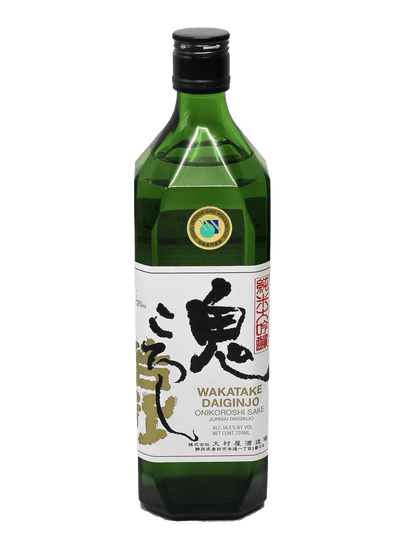An Introduction to Today’s Wines of Greece

Discover the diversity and depth of Greek wines—from crisp, mineral-driven Assyrtiko to bold, structured Xinomavro. This guide explores native grapes, key regions, and why Bottle Barn in Sonoma offers one of the finest selections of Greek wines in the U.S. Whether you're new to Greek wine or expanding your cellar, Bottle Barn has you covered.
……………..
Greece is one of the world’s oldest wine regions. It boasts a long history of cultivating native grape varieties across a wide range of climates and soils. And Bottle Barn has the Greek wines to give you a full appreciation of their vinous diversity.
The volcanic terrain of Santorini produces sharp, mineral Assyrtiko, while the cooler uplands of Naoussa yield complex, age-worthy Xinomavro. These and other indigenous grapes—like Moschofilero, Agiorgitiko, and Limniona—are increasingly recognized for their quality and character. Today, Greek winemaker blend deep tradition with modern techniques, resulting in wines that are distinctive, expressive, and increasingly noticeable on the international stage.
Access to Greek wines has steadily improved in the US, yet few retailers match the breadth and quality found at Bottle Barn in Sonoma. Known for its eclectic and well-curated selection, Bottle Barn showcases a superb collection of Greek wines, from crisp island whites to structured mainland reds. Their offerings make it easy for curious drinkers and seasoned professionals alike to explore Greece’s vinous riches.
Greek Wines: Variety or Region?
You may have heard of Assyrtiko, but what about other Greek wines and wine grapes? What about the appellations?
When choosing Greek wines, you will have a choice between focusing on grape variety or region. Greek wine labels typically highlight the grape—such as Assyrtiko, Xinomavro, or Agiorgitiko—making variety a natural starting point.
Each of these native grapes carries strong, recognizable traits: Assyrtiko is known for its tension and salinity, Xinomavro for its structure and aging potential, and Agiorgitiko for its supple texture and spice. For drinkers new to Greek wine, exploring by variety can be an effective way to build familiarity with the country’s distinctive grapes.
Regional differences within Greece shape these varieties in important ways, however. Assyrtiko from Santorini, grown in volcanic ash under extreme winds, is leaner and more mineral than versions from northern Greece, where the same grape may show more roundness and fruit.
Likewise, Xinomavro from Naoussa delivers tannic, earthy complexity. Wines from Amyndeon, a cooler region, will usually be lighter and more aromatic.
Choosing wines by region allows one to appreciate how soil, climate, and elevation influence expression. For a deeper understanding of Greek wine, consider both variety and origin together. This will tell the full story and make the wine memorable. Do not hesitate to contact Bottle Barn’s knowledgeable staff for professional advice next time you order wine online.
|
|
|
|
Red Wine |
White Wine |
The Rise of Greek White Wines
Greek white wines, in particular, have gained significant international attention, driven by their freshness, precision, and strong sense of place. Assyrtiko from Santorini has led this shift. About 15 years ago, this white wine’s crisp acidity and volcanic minerality caught the attention of sommeliers and wine buyers looking for something distinctive outside the classic European canon.
The success of Assyrtiko has opened the door to other native white varieties such as Moschofilero, Malagousia, and Robola, each offering unique flavor profiles and textures.
Unlike many warm-climate white wines, Greek whites often maintain high acidity and restrained alcohol, making them versatile with food and appealing to a broad range of drinkers.
The rise of Greek white wines also reflects broader consumer trends favoring authenticity, sustainability, and regional identity. Many Greek producers farm organically or use minimal intervention in the cellar, highlighting the natural character of their vineyards.
Improved export networks and stronger international marketing efforts have helped bring these wines to markets in the U.S., U.K., and beyond, where they now appear regularly on wine lists and in specialty shops. As more consumers seek out crisp, terroir-driven whites with personality, Greece has positioned itself as a serious player, not just a curiosity. Be assured, Bottle Barn always has the best Greek wines.
A very popular Greek white wine for when you buy wine online is the 2023 Papagiannakos Assyrtiko or consider the budget-worthy Gai'a Ritinitis Nobilis Retsina. The latter also serves extremely well for cooking with dry white wine.
Greek Red Wines
While Greek white wines have led this Mediterranean country’s recent surge in popularity, Greek red wines are absolutely worth exploring too. Indigenous red varieties like Xinomavro, Agiorgitiko, and Limniona offer distinct profiles that stand apart from the more common international styles.
Let’s explore the best Greek red wines, including those from the best online liquor store.
Xinomavro, often compared to Nebbiolo for its tannic structure and aging potential, produces complex wines. They feature notes of dried tomato, black olive, and spice. Agiorgitiko, more supple and fruit-forward, shows a softer, rounder character ideal for early drinking or pairing with a wide range of dishes. From the best online wine store, consider the 2022 Gaia Agiorgitiko, for example.
These reds also express Greece’s varied landscapes and growing conditions. Xinomavro will taste differently when from Naoussa versus Amyndeon; Agiorgitiko from Nemea also differs in depth and concentration depending on altitude and soil. Meanwhile, less-known grapes like Mavrotragano from Santorini or Vertzami from the Ionian islands add further dimension. As producers continue to refine viticulture and winemaking techniques, Greek red wines are gaining attention for their authenticity, value, and ability to age. These qualities that make them well worth seeking out the next time you buy wine online.
Related Blogs:
Spain’s Best Wine Regions: Rioja, Ribera del Duero, and Galicia




















Leave a comment